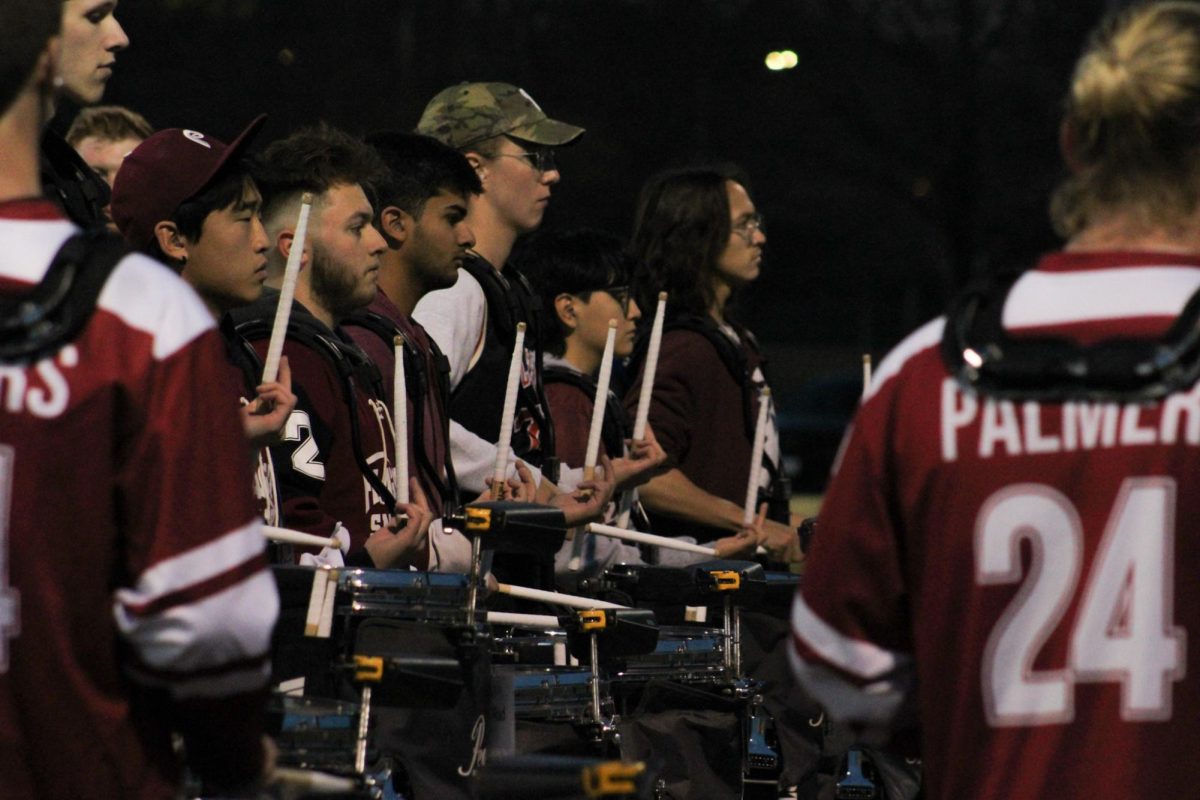![(Merlijn Hoek (wikiportret.nl) [CC BY 3.0 (http://creativecommons.org/licenses/by/3.0) or GFDL (http://www.gnu.org/copyleft/fdl.html)], via Wikimedia Commons)](https://dailycollegian.com/media/2015/03/1024px-Kendrick-lamar-1360479601-e1427852820985.jpg)
On the album’s closing spoken-word segment, Lamar talks about a fictional caterpillar that, feeling trapped in its environment, begins to have “ideas such as going home and bringing back new concepts to this mad city.” Rather than cherry picking select ideas, though, Lamar brings them all home on “To Pimp a Butterfly.”
There’s no line to draw through the album other than Lamar himself, an incredibly unreliable narrator who restlessly shifts his delivery and perspective not only with each song, but often with each verse.
Regardless of which emotional form he may be taking, Lamar’s sense of rhythm, narrative and character is extraordinary. His voice is the only instrument that can tie this wildly unpredictable and ambitious hodgepodge of influences, ideas and contradictions into the cohesive masterpiece that it is.
Musically, “To Pimp a Butterfly,” released March 16, is just as unhinged as Lamar’s constantly changing vocal inflections. The album takes you on a virtual tour of African-American music history. But Lamar, with the help of saxophonist Terrence Martin, pianist Robert Glasper and one of the world’s best bass players in Thundercat, dives into far more imposing, avant-garde territory than Lamar has ever attempted.
It’s this incredible group of musicians that allows Lamar to stretch effortlessly between the relentless, free-jazz speed-rhyming of the interlude “For Free?” to the minimalist, confident funk of “King Kunta.”
Lamar has an innate sense of the strengths of each of his collaborators throughout the album. Not only is Lamar able to find the perfect spot for each guest, he always molds his own ideas around theirs, which lets the group interact with and develop around one another. Glasper and Thundercat form a blissful, laid-back funk groove on “Institutionalized” that allows Snoop Dogg’s guest verse to feel as comfortable and natural in the song as Lamar’s own troubled musings.
Though “Institutionalized” and the following track, “These Walls,” are steeped in the laid-back funk style that made West Coast rap famous, there is no rest for Lamar in the lyrics. In a spoken-word piece that he repeats at the end of many of the album’s songs, Lamar is haunted by a specter named “Lucy” – a sort of devil incarnate who constantly tempts him, waiting for him around every corner.
He faces Lucy in the nightmarish, free-jazz meltdown “u,” then seemingly emerges triumphant in the confident but restless “Alright.” But around the album’s halfway mark, when Lamar repeats the spoken-word piece but instead declares that he will return home to seek answers and comfort, is when the album truly locks itself into gear.
The beautifully smooth rhythms of “Momma” have the prints of Thundercat and Flying Lotus all over them, and they provide the perfect backdrop for Lamar to come to terms with his new status within the community he grew up in. On the dark, humorous “Hood Politics” and the staggering “How Much A Dollar Cost,” Lamar comes face to face with his success, and how it influences his interactions in his hometown of Compton, Los Angeles.
On “Hood Politics,” Lamar sees himself in a young neighborhood boy, where in “How Much A Dollar Cost,” Lamar finds himself hesitant to indulge in charity, arguing with a homeless man who Lamar sees as a hustler and a drug addict, unworthy of his hard-earned money. While Lamar doesn’t quite have a change of heart, the interaction gives him pause, reminding him of his own humble roots.
The album’s drastic second-half shift in tone reaches its apex in the jaw-dropping “The Blacker The Berry,” an apocalyptic track with three of the most vicious verses of Lamar’s career. Having spent the previous dozen tracks embroiled in internal conflict, Lamar finally explodes, lashing out not only at himself but his oppressors and doubters.
Though he begins each verse with the line, “I’m the biggest hypocrite of 2015,” Lamar’s vision goes far beyond simple self-loathing. The song is an embodiment of Lamar’s internal chaos, the chaos of the neighborhood he grew up in and the chaos Lamar sees in the world around him.
But even after this, Lamar still has time for one final 180. The album’s lead single, the relentlessly upbeat “i,” makes infinitely more sense in the live form in which it appears on “To Pimp a Butterfly.” The closer, “Mortal Men,” has Lamar giving an interview to the ghost of Tupac, his earliest idol. It’s a strange touch, but the conversation sheds light on the album’s themes.
“To Pimp a Butterfly” is inconsistent because it’s haunted by ghosts, by both the living and the dead. The conflict between what Lamar has learned and what he feels the need to teach is what drives this record, an ultra-personal, unpredictable opus that already feels like a classic.
Jackson Maxwell can be reached at [email protected].[liveblog]


















